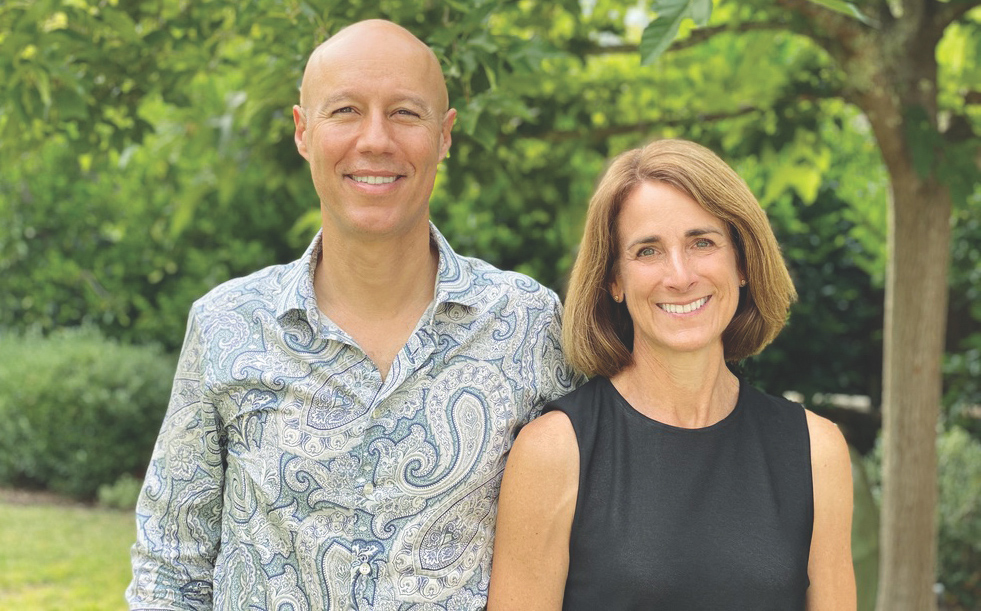Moving DAF Inertia into Action

David Risher is, like you’d assume of many high-level tech execs, into big goals. The Amazon alum’s nonprofit, Worldreader, has reached 21 million children across the globe.
But Risher’s goal by 2025 is to serve 25 million kids, get them reading at least 25 books a year, while expanding Worldreader’s budget from $10 million to 25.
“There’s no such thing as a wealthy society that’s not a literate society,” Risher says. “Without reading, it’s really hard to solve the big world problems.”
Funnily enough, Risher and his wife, Jennifer, sparked nearly $30 million in charitable gifts with much less defined objectives. Since 2020, when their #HalfMyDAF initiative was launched, the couple has – alongside other donor advised fund holders – vastly accelerated donations.
So, kind of by accident, Risher is on the vanguard of a movement to tap into this wealthy society’s charitable giving to help solve some of those big world problems.
Q. Mr. David Risher, what is a DAF (Donor Advised Fund)?
A. A DAF is like a charitable checking account.
Typically, you have some life event that creates some money. And your financial advisor says, ‘We’ll put it in a donor advised fund, which will let you get your tax break right now, but we’ll allow you to deploy it over time in whatever charitable way you want.’
That’s the good news. The bad news is oftentimes people do the first part. They put the money away, but they never get around to the second part. And the result is we have $160 billion nationally sitting in DAFs right now that hasn’t been put to use.
Q. What guidance did you get from the financial advisors managing your DAF funds? I ask this because their management fees are based on total assets managed, not on how many gifts are doled out.
A. You’ve put your finger on it. There’s very little interaction. There are all kinds of incentives to get these things set up because it’s an annuity for the business [the financial advisors].
I don’t want to be entirely cynical about it. You’re really locking people into doing something charitable. So that’s all good.
But there are all kinds of reasons why this structure is like a lobster trap. It’s easy for lobsters to get in and hard for them to get out.
Q. So why #HalfMyDAF?
A. The idea is super simple. If you, as a donor, commit to spending down half of your DAF over the course of a calendar year, we will match all your grants up to however much money we can find.
So far, $27.5 million has been granted this way over the last three years. You can see all the organizations the community has supported at www.halfmydaf.com.
Q. For context, the San Francisco-based Zellerbach Family Foundation has given out about $150 million over the past 66 years, averaging $2.2 million a year. So, what you are doing easily rivals a small-to-midsize private foundation.
A. That’s an insanely cool way to think about it.
What does that tell you? It tells you that a lot of this money is sitting there, stuck through inertia. It’s not stuck because people are hoarding it. They’re just looking for ways to give. And we happen to give them a way to do that.
When you compare the $27 million we have raised, compared to the $160 billion in DAFs nationwide, that suggests we have just scratched the surface. You have to ask yourself: ‘What can we do to really make this bigger?’
Imagine if there were a matching fund, not of $1 to $3 million, but of $100 million.
Q. You’re the kind of guy who likes goals.
A. I do, I do. [Laughs.]
Q. So how long till you get to $100 million?
A. It’s a step-change problem.
The first question is, how long do we get to $10 million? We have got to find someone who shares the vision and is just as excited about it as we are.
You can learn more about what #HalfMyDAF has accomplished, and even get involved yourself, at www.halfmydaf.com.
